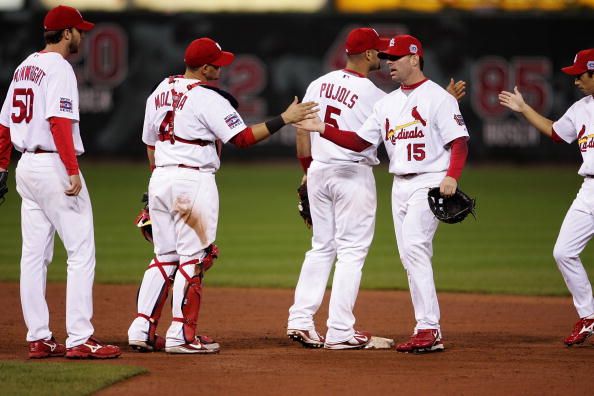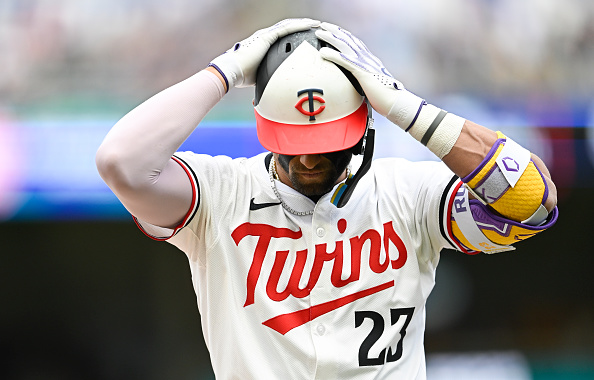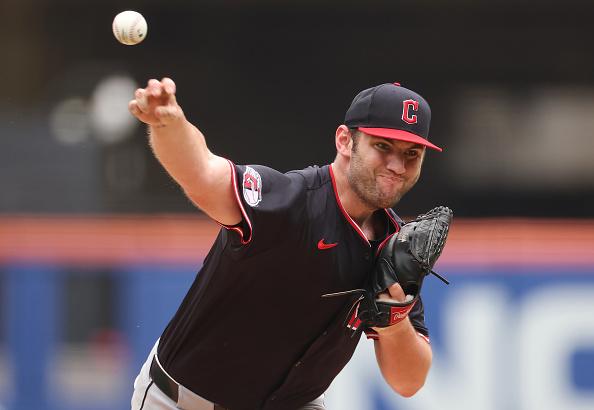The St. Louis franchise has been around since the 1800s when they started in 1882 as the Brown Stockings. They switched to the Browns for a while and were known as the Perfectos for the 1899 season. They have been known as the Cardinals since 1900. Consistency has been a trademark of the franchise. Since 1926 they have never gone more than 18 seasons without making the playoffs and have won more World Series than any other National League team.
Make sure to check out all of our other All-Time Rosters.
Starting Nine
Ted Simmons, C
I bet many of you were expecting Yadi here. Sorry to disappoint you, but Simmons was better. Yes, Molina is one of the best defensive catchers ever, but his offense doesn’t even come close to Simmons. From 1971-1980, the switch-hitter was the second-best catcher in baseball behind Johnny Bench. For that decade, Simmons slashed .301/.367/.466 and averaged 33 doubles, 17 home runs, and 91 RBIs. He was elected to the Hall of Fame in 2020.
Albert Pujols, 1B
Not sure what else there is to say about Pujols. The man was simply one of the best hitters the game has ever seen for the first 10 years of his career. In that decade from 2001-2010, the Machine slashed .331/.426/.625, hit 408 home runs and drove in 1,230 runs. Those are Hall-of-Fame career numbers, let alone achieving them in 10 years. In that time, he won three MVP awards and probably should have had a couple more if not for the writers ridiculously giving the 2006 award to Ryan Howard and a close race with Joey Votto in 2010.
Rogers Hornsby, 2B
From one guy with insane stats to another. Hornsby was the greatest second baseman ever and from 1921-1925, his achievements were historic. During those five years, Hornsby slashed .402/.474/.690 and had a 162-game average of 48 doubles, 14 triples, 34 homers, 143 runs, 139 RBIs. He also got the triple crown twice and won the MVP award in 1925. Hornsby was inducted into Cooperstown in 1942.
Ken Boyer, 3B
One of the biggest snubs by the HOF, Boyer was an excellent third baseman. For a more in-depth look at Boyer’s life and career, check out our Flashback Friday article.
Ozzie Smith, SS
The greatest defensive shortstop ever rounds out an impressive infield group for the Cards. For 11 years from 1982-1992, Ozzie was an All-Star and a Gold Glove winner each season. In 1987 he finished second in MVP voting. Even his offense over that time was near league average at 96 OPS+. The Wizard also stole 395 bases in those 11 seasons. He was inducted to the Hall of Fame in 2002.
Joe Medwick, LF
One of the premier hitters in the 1930s, Medwick won the triple crown in 1937 with a .374 average, 31 home runs, and 154 RBIs. He won the MVP that season as well and led the league in doubles, hits, and runs. During his time in St. Louis, he slashed a ridiculous .335/.372/.545. In 1934, he came through in the World Series going 11-for-29 with a homer, and five RBIs. He was elected to the Hall of Fame in 1968.
Jim Edmonds, CF
After an injury-plagued 1999 season, he was traded to the St. Louis Cardinals. From 2000-2005, Edmonds was one of the best players in the game. He had a 40.1 fWAR in those six seasons along with averaging 35 HRs with a .414 wOBA and a 153 wRC+. Edmonds won six Gold Gloves with the Cardinals and finished in the top 5 of MVP voting twice. He should be in the Hall of Fame.
Stan Musial, RF
Yet another Cardinal with absolutely absurd stats. Musial was an extra-base machine and is the only player in history with 600 doubles, 150 triples, and 400 home runs. He is also one of only eight players with 1,900 runs and 1,900 RBIs. Stan the Man finished his career with 3,630 hits and surprisingly had 1,815 at home and on the road. He was inducted into the Hall of Fame in 1969.
Johnny Mize, DH
A lot like Pujols, Mize was destroying baseballs from the beginning of his career. Although he only played six seasons in St. Louis, the Big Cat led the league in OPS three times and was runner-up twice for the NL MVP award. Over those six seasons, Mize slashed .336/.419/.600 and blasted 158 home runs. He was elected to the Hall of Fame in 1981 by the Veteran’s Committee.
Starting Rotation
Bob Gibson, RHP
He won two rings, two CYAs, an MVP, and nine Gold Gloves. Gibson also had one of the most dominant seasons in MLB history in 1968. That year is historic, and if you put a poll up for fans asking who they want pitching Game 7 of a World Series, many would select Gibby. One more stat that proves just how good he was: There are only three pitchers in history to have 250 wins, a sub-3.00 ERA and 3,000 strikeouts. Those pitchers are Gibson, Tom Seaver, and Walter Johnson. Gibby was inducted into the Hall of Fame in 1981.
Adam Wainwright, RHP
Waino keeps on going. He is having another good season with the Cards this year with a 3.32 ERA. Although Wainwright has never won a CYA, he finished in the top 3 four times. Despite the ups and downs of his career through injuries, bullpen stints, and inconsistency, the right-hander has gotten it done for 17 years with St. Louis.
Dizzy Dean, RHP
Dean had an impressive five-year stretch in the early 1930s. from 1932-1936, the right-hander averaged 24 wins, 306 innings, and had a 3.04 ERA. He led the league four years in a row in strikeouts as well. He won the NL MVP in 1934 as part of the Gas House Gang which won the World Series. In that series, Dean was 2-1 with a 1.73 ERA including a shutout. He was elected to the Hall of Fame in 1953.
Harry Brecheen, LHP
Aside from three relief appearances in 1940, Brecheen didn’t start regularly until 1943 at 28 years old. He went on to appear in three World Series and win a couple in 1944 and 1946 and lead the league in ERA and strikeouts in 1948. During those postseasons, Brecheen was 4-1 with a minuscule 0.83 ERA. He finished his Cardinals career with 128 wins and a 2.91 ERA.
John Tudor, LHP
The lefty only pitched for the Cardinals for five seasons. In that time, he had a 62-26 record with a 2.52 ERA. In 1985, Tudor had one of the best seasons in franchise history with 21 wins, a 1.93 ERA, and a league-leading 10 shutouts. That season Tudor had a stretch from June 8 to September 11 that was historic. He was 16-1 with 11 complete games and a 1.08 ERA. He would’ve won the CYA if not for Dwight Gooden winning the pitching triple crown that year.
Bullpen
Jason Isringhausen, RHP
Isringhausen was on a path to be a top starting pitcher for the Mets. Injuries and struggles derailed that, so he had to reinvent himself. That new right-hander became the franchise leader in saves with 217. After a couple good seasons in Oakland, Izzy played seven seasons in St. Louis. He saved at least 30 games in five of those years including leading the NL in 2004.
Lee Smith, RHP
Smith is more remembered for his time with the NL Central rival Cubs. However, in his two full seasons with the Cards he saved 90 games and led the league both years in 1991 and 1992. Despite the short time in St. Louis, he is still second on the team’s all-time saves list and deserves a spot here.
Todd Worrell, RHP
The big righty burst onto the scene in 1986, leading the league in saves and winning Rookie of the Year. That was while being a workhorse tossing 103.2 innings. In six years with the Cards, Worrell had a 2.56 ERA and 129 saves.
Bruce Sutter, RHP
Here is another closer that was taken from the hated Cubbies. Sutter got to St. Louis in 1981 and proceeded to lead the league in saves in three of his four season with the Cardinals. Over that time, he averaged nearly 100 innings per year and had a 2.72 ERA with 127 saves.
Trevor Rosenthal, RHP
He was the next in line to be a dominant Cardinals closer, and he was for a couple of years. In 2014, he saved 45 games and the following year, he set the franchise record for saves in a season with 48. He had great stuff and wiped hitters out to the tune of 12 strikeouts per nine innings.
Al Hrabosky, LHP
Hrabosky had a flair about him. Anyone who watched him pitch knew that. He was also a pretty damn good pitcher. The Mad Hungarian spent eight seasons wiht the Cardinals and was 40-20 with a 2.98 ERA. He even finished in the top 5 of CYA voting twice. He had his best year in 1975 going 13-3 with a 1.66 ERA and leading the league with 22 saves.
Bench
Yadier Molina, C
Here he is. Molina will likely be a Hall of Famer and that sure-to-be heated argument is for another time. He makes this list because he is arguably the greatest defensive catcher ever. He also produced in significant moments for the Cardinals in the postseason.
Keith Hernandez, 1B
If it wasn’t for his beef with Whitey Herzog, Hernandez might have been a Cardinal for life. He was Co-MVP in 1979 along with Willie Stargell, and although Stragell is one of my favorite players, Mex deserved it that year. He sits as the Mets starting first baseman on their All-Time roster and still makes this team even with the depth St. Louis has had in their history at first base.
Jim Bottomley, 1B
For the man who is the only player ever to have 40 doubles, 20 triples, and 30 home runs in a season, there is a spot on the roster. He won MVP that year in 1928 and led the league with 136 RBIs. Aside from his short stint in his rookie year, Bottomley slashed an impressive .325/.388/.537 with 1,070 RBI over 10 seasons from 1923-1932. He was elected to the Hall of Fame in 1974 by the Veteran’s Committee.
Lou Brock, OF
Brock was an incredible speedster and an excellent player. He just doesn’t get a starting spot on this squad. He had 938 stolen bases and 3,023 hits along with batting .293 for his career. Brock led the league in SBs eight times and set the single season record with 118 in 1974 which has only been surpassed by Rickey Henderson.
Joe Torre, C/1B/3B
Torre only played for the Cardinals for six years, but he was an MVP in 1971. That season he led the league in hits (230), RBIs (137), and batting (.363). In his time with St. Louis, he slashed .308/.382/.458 while being a four-time All-Star.
Enos Slaughter, OF
Slaughter was looking like a superstar in 1942 when he led the league in hits (188), triples (17), and total bases (292). However, at 27 years old and hitting his prime, he would go serve in the Armed Forces for three years. He returned in 1946 and led the league in RBIs and finished third in MVP voting. In his 13 years with St. Louis, Slaughter slashed .305/.384/.463. He was elected to the Hall of Fame in 1985 by the Veteran’s Committee.
Honorable Mentions
Larry Jackson
Bob Forsch
Mark McGwire
Curt Flood
Ray Lankford
Check us out on our socials:
Twitter: @PTSTNews and @TalkPrimeTime
Facebook Page: Prime Time Sports Talk
Join our Facebook Group: Prime Time Sports Talk
Instagram: @primetimesportstalk
Follow Johnnie Black on Twitter @jball0202
Main Image Credit: Embed from Getty Images







